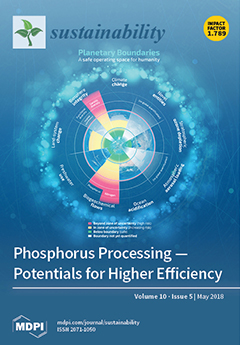Open AccessArticle
Developing a Model to Assess the Potential Impact of TUM Hydropower Turbines on Small River Ecology
by
Weiwei Yao 1,2 , Yuansheng Chen 1,*, Guoan Yu 1,2, Mingzhong Xiao 3, Xiaoyi Ma 4,5 and Fakai Lei 6
, Yuansheng Chen 1,*, Guoan Yu 1,2, Mingzhong Xiao 3, Xiaoyi Ma 4,5 and Fakai Lei 6
1
Key Laboratory of Environmental Remediation, Institute of Geographic Sciences and Natural Resources Research, China Academy of Sciences, Beijing 100101, China
2
Department of Civil, Geo and Environmental Engineering, Technical University of Munich (TUM), Arcisstrasse 21, 80333 Munich, Germany
3
State Key Laboratory of Hydrology-Water Resources and Hydraulic Engineering, Hohai University, Nanjing 210098, China
4
College of Water Resources and Architectural Engineering, Northwest A&F University, Yangling 712100, China
5
Key Laboratory of Agricultural Soil and Water Engineering in Arid Regions of Ministry of Education, Northwest A&F University, Yangling 712100, China
6
Powerchina Guiyang Engineering Corporation Limited, Guizhou 550081, China
Cited by 10 | Viewed by 4108
Abstract
Small hydropower is a renewable energy technology that is used for electricity generation worldwide, but still has potential for further development. However, during the installation of small hydropower, the ecological impacts of the power plants need to be thoroughly investigated. In addressing the
[...] Read more.
Small hydropower is a renewable energy technology that is used for electricity generation worldwide, but still has potential for further development. However, during the installation of small hydropower, the ecological impacts of the power plants need to be thoroughly investigated. In addressing the challenges of energy production and minimizing the environmental impacts of small hydropower installation and operation, this study has applied an ecohydraulic model to investigate river hydrodynamics, hydromorphology, habitat, and the population impacts of small hydropower, and presented the Mum River as a case study. Two scenarios were implemented in this research to simulate the hydrodynamic, sedimentation, habitat, and population status in order to assess the potential effects caused by the TUM plant. At the Mum River, two scenarios were proposed: the TUM plant was not considered in scenario S1, but was considered in scenario S2. The model results for scenario S2 indicated that the habitat was suitable for fish species living in the Mum River, with fish population numbers between 4.6 × 10
3 and 6.6 × 10
3. The S2 results indicated that the impacts of the TUM plant were negligible when compared with S1. Although the impact of the TUM plant on the Mum River is relatively large when the discharge is high (19 m
3/s), calculations based on stable flow shows that the TUM plant could function well on the river ecosystem when the discharge is low or at normal rates. Therefore, this study shows that the TUM plant would be a good option to meet the needs of energy generation whilst having a minimal impact on river habitats and changes in fish species population in similar small rivers and streams.
Full article
►▼
Show Figures





